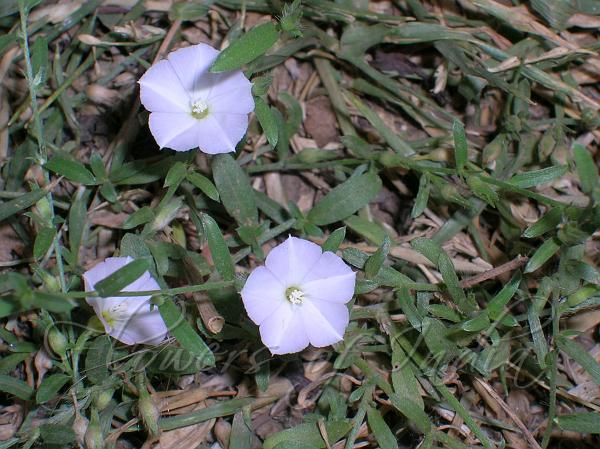|
| Prostrate Bindweed |
|

|

| File size | 682583 |
| Original date | 5/15/05 7:12 AM |
| Resolution | 2048 x 1536 |
| Flash | Flash fired, auto |
| Focal length | 16.2mm |
| Exposure time | 1/60s |
| Aperture | 8.2 |
| Focus Distance | |
| Metering Mode | Partial |
| Camera make | NIKON |
| Camera model | E3700 |
| Sensor type |
|
|
|
Photo: |
Botanical name: Convolvulus prostratus Family: Convolvulaceae (Morning glory family)
Synonyms: Convolvulus pluricaulis, Convolvulus microphyllus, Convolvulus deserti
Synonyms: Convolvulus pluricaulis, Convolvulus microphyllus, Convolvulus deserti
Prostrate Bindweed is a prostrate, spreading, perennial,
wild herb commonly found on sandy or rocky ground under xerophytic conditions
in northern India. The species is marked by great morphological variability
especially in size of the flower. Stems are ascending or prostrate, 10-40
cm long, densely velvety with appressed to spreading hairs. Leaves are
nearly stalkless, linear to oblong, lanceshaped or inverted-lanceshaped,
0.8-3 cm long, 1.5-6 mm broad, pointed to blunt
at the tip, velvety to hairy. Flowers are borne in 1-3-flowered cymes
which are carried on stalks up to 2-3 cm long but often much shorter or
absent. Bracts are linear to lanceshaped, about 3-7 mm long. Flower-stalks
are up to 3 mm long. Sepals are lanceshaped, long-pointed, 4-8 mm long,
the 2 outer longer, hairy. Flowers are white or pale pink, 1-1.3 cm long,
midpetaline areas velvety. Style is about 2-4 mm long, stigma-lobes
3-5 mm long.
Medicinal uses: The leaves are the major constituent of a
herbal drug 'ShankhaPushpi'. The drug is used as antiepileptic. It is
used alone or is administered alongwith modern antiepileptic drugs.
The leaves are the major constituent of a
herbal drug 'ShankhaPushpi'. The drug is used as antiepileptic. It is
used alone or is administered alongwith modern antiepileptic drugs.
Medicinal uses:
 The leaves are the major constituent of a
herbal drug 'ShankhaPushpi'. The drug is used as antiepileptic. It is
used alone or is administered alongwith modern antiepileptic drugs.
The leaves are the major constituent of a
herbal drug 'ShankhaPushpi'. The drug is used as antiepileptic. It is
used alone or is administered alongwith modern antiepileptic drugs.| Identification credit: R.K. Nimai Singh, Jitendra Jawale | Photographed in Lodhi Garden, Delhi. |
• Is this flower misidentified? If yes,